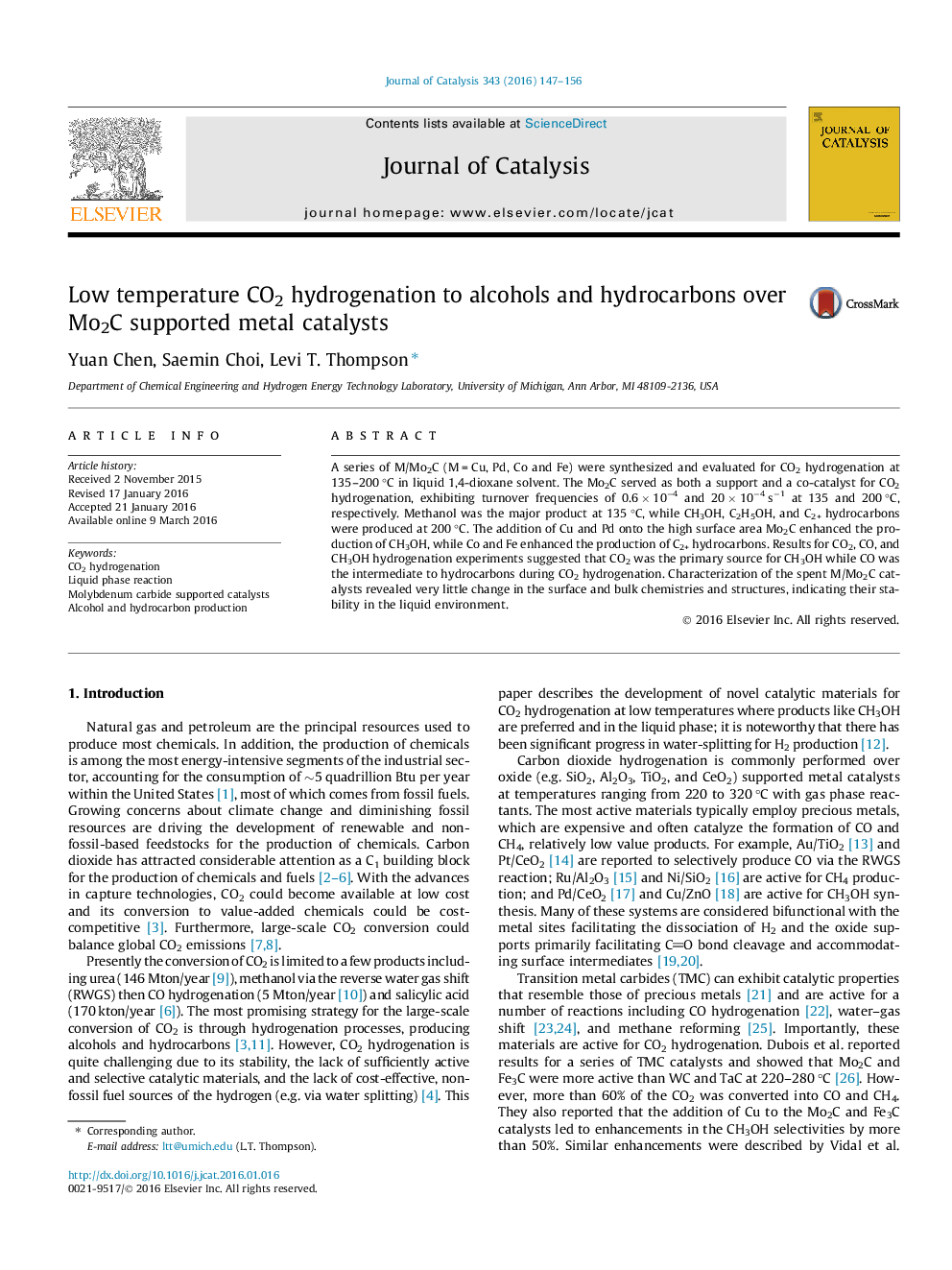| Article ID | Journal | Published Year | Pages | File Type |
|---|---|---|---|---|
| 6455970 | Journal of Catalysis | 2016 | 10 Pages |
•Mo2C-supported catalysts exhibit activity for CO2 hydrogenation in liquid solvents.•Catalytic performance is significantly influenced by the type of metal deposition.•Hydrocarbons and methanol are produced via different intermediates/sites.•Metal/Mo2C catalysts display excellent bulk, surface, and catalytic stabilities.
A series of M/Mo2C (M = Cu, Pd, Co and Fe) were synthesized and evaluated for CO2 hydrogenation at 135–200 °C in liquid 1,4-dioxane solvent. The Mo2C served as both a support and a co-catalyst for CO2 hydrogenation, exhibiting turnover frequencies of 0.6 × 10−4 and 20 × 10−4 s−1 at 135 and 200 °C, respectively. Methanol was the major product at 135 °C, while CH3OH, C2H5OH, and C2+ hydrocarbons were produced at 200 °C. The addition of Cu and Pd onto the high surface area Mo2C enhanced the production of CH3OH, while Co and Fe enhanced the production of C2+ hydrocarbons. Results for CO2, CO, and CH3OH hydrogenation experiments suggested that CO2 was the primary source for CH3OH while CO was the intermediate to hydrocarbons during CO2 hydrogenation. Characterization of the spent M/Mo2C catalysts revealed very little change in the surface and bulk chemistries and structures, indicating their stability in the liquid environment.
Graphical abstractFigure optionsDownload full-size imageDownload high-quality image (135 K)Download as PowerPoint slide
